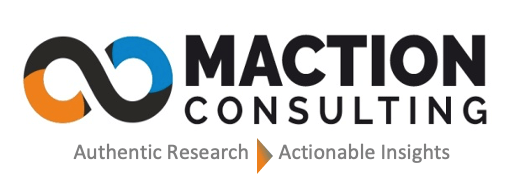In an increasingly data-driven world, the accuracy and fairness of our analytical models are paramount. Biases, often ingrained in the datasets and the very algorithms we create, can lead to skewed results, unfair outcomes, and ultimately, a loss of trust. One of the most powerful strategies to combat this pervasive issue is to enhance diversity within our data analysis teams. By embracing a broader range of perspectives, particularly by prioritizing female hires, companies like Infosys can significantly strengthen their ability to identify and mitigate biases, leading to more robust and equitable AI-driven insights.
Women, through their varied life experiences and understanding of societal nuances, bring unique perspectives that are invaluable in the complex world of data. These insights are not just about adding different viewpoints; they are about actively challenging assumptions, questioning data interpretations, and uncovering blind spots that a homogenous team might miss. This is especially critical in client projects involving big data, where even subtle, overlooked gender biases can dramatically skew results, leading to misinformed decisions and potentially alienating vast segments of the user base.
The Problem of Bias in Data Analysis
Bias can creep into data analysis at multiple stages. It can originate in the methods of data collection, where sampling techniques might inadvertently exclude certain demographics, or where the questions asked might be framed in a way that elicits biased responses. For instance, if a survey designed to understand consumer preferences is primarily distributed through channels frequented by a specific demographic, the resulting data will naturally reflect that group’s preferences, potentially misrepresenting the broader market. Similarly, historical data, often used to train machine learning models, can carry the biases of past societal inequalities, perpetuating them into the future if not carefully addressed.
Furthermore, biases can be introduced during the data cleaning and processing stages, as well as in the selection and weighting of features for algorithmic models. Without diverse perspectives scrutinizing these steps, it’s easy for existing biases to be amplified, rather than attenuated.
Case Study 1: Mitigating Bias in a Creative Marketplace Algorithm
Consider a large online creative marketplace that connects freelance designers with clients. The platform’s recommendation algorithm, initially developed by a predominantly male team, began to show a subtle but consistent bias towards male designers when suggesting portfolios for projects in traditionally “masculine” fields like industrial design or engineering. Conversely, female designers were disproportionately recommended for projects in fields like fashion or graphic design, even when their portfolios showed expertise across various domains.
Upon recognizing this issue, the company implemented a strategy to increase gender diversity within its data science team. The newly diversified team, using quantitative method research to analyze user click-through rates and project allocation patterns, quickly identified that the historical data used to train the algorithm contained inherent biases. Past client hiring patterns, which favored male designers for certain project types, had inadvertently been encoded into the algorithm.
The team then re-engineered the feature selection process, incorporating metrics that focused purely on skill and portfolio quality, rather than historical hiring trends influenced by gender. They also introduced a feedback loop that allowed clients to explicitly rate the relevance of suggested portfolios, with a focus on ensuring diverse suggestions. The result was a significantly more balanced recommendation system, providing equal opportunities for both male and female designers, enhancing fairness, and ultimately improving the overall client experience by presenting a wider array of suitable candidates.
Case Study 2: Addressing Health Disparities in Predictive Models
In the healthcare sector, bias in data can have life-or-death implications. A national health organization was developing a predictive model to identify individuals at high risk for a specific chronic disease. The initial model, built using data primarily from a dominant demographic group, showed excellent accuracy within that group but performed poorly and even generated false positives for minority populations.
To address this, the organization partnered with Infosys, which deployed a data analysis team with significant gender and ethnic diversity. This team critically examined the methods of data collection for the initial dataset. They discovered that lifestyle and environmental factors, which varied significantly across different demographic groups, were not adequately captured or weighted in the original data. Furthermore, they found that certain symptoms, more prevalent in specific female sub-populations, were being under-diagnosed due to a lack of representation in the training data.
The diverse team introduced new data features and collaborated with local community health workers to gather more representative information using a targeted quantitative method research approach. They also implemented techniques for re-weighting data points to ensure that underrepresented groups had a stronger influence on the model’s learning process. The revised predictive model demonstrated a remarkable improvement in accuracy across all demographic groups, reducing health disparities and enabling earlier, more effective interventions for a wider patient population.
The Path Forward: Cultivating Diverse Data Teams
These case studies highlight the tangible benefits of diversity. By prioritizing female hires through targeted referral programs and fostering an inclusive environment, companies like Infosys can proactively build more gender-balanced data analysis teams. This isn’t merely about achieving quotas; it’s about leveraging a critical resource—diverse human intelligence—to build more accurate, fair, and ultimately, more effective data-driven solutions for a complex and diverse world. The future of AI and data analysis hinges on our ability to embrace and champion diversity, ensuring that our technological advancements serve all of humanity equitably.


